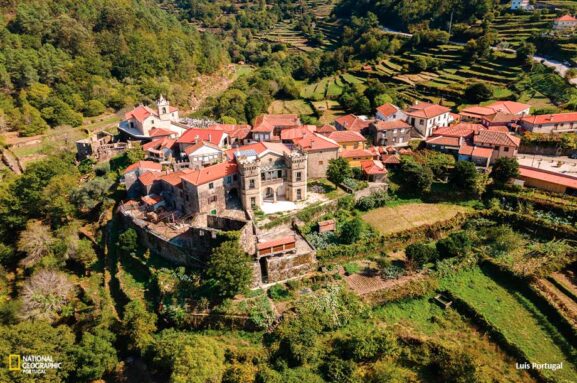Americans Wish They Knew Before Moving To Portugal
Since the pandemic, Americans have flocked to Portugal in record numbers. From 2017 to 2022, the number of Americans living in Portugal increased by 239%, reaching almost 10,000 people.
Portugal is having a moment in the sun in terms of its popularity among U.S. expats, and it’s understandable why so many are falling for this charming country. It’s safe, warm, and inexpensive, and it has beautiful beaches, friendly locals, and a rich history.
But for all that Portugal is easy to love, it also has drawbacks and eccentricities that can be confounding to any new arrival. It’s important to be aware of those quirks before you move here so that you can decide whether you’re comfortable with them.
Here’s a round-up of things expats wish they knew before moving to Portugal.
The Weather Isn’t Always Perfect
Mainland Portugal is famed for its mild Mediterranean climate and abundant sunshine, but contrary to popular belief, the weather isn’t always perfect. It can be surprisingly cold, wet, windy, and rainy in certain parts of the country at certain times of the year.
Northern and inland districts tend to get the coolest temperatures, where the mean annual minimum temperature is about 43 degrees Fahrenheit but can go as low as 14. Even in the Algarve, which has some of the warmest weather in the country, temperatures can range as low as 40 to 50 degrees Fahrenheit in winter.
Cool temperatures feel more extreme when they coincide with rainy and windy season, which is the case across much of the country. If you live in an older home, there can be little relief from bad weather. Designed to keep heat out, older homes, particularly those in the countryside, are often cooler and damper inside than the conditions outside.
Portugal gets plenty of rain in spring—so much so, in fact, that there’s a local saying: em Abril, águas mil (in April, water in the thousands). The north gets the most rainfall. Braga, for instance, gets 57 inches of precipitation and 134 rainy days per year.
It’s worth pointing out that, despite being characterized by a Mediterranean climate, Portugal is not on the Mediterranean. Its coastline is lapped by Atlantic waters, which can be bracingly cold. Sea surface temperatures off Portugal’s west coast are in the 50- to 60-degree Fahrenheit range.
Taxes Are Higher Than You Might Expect
Portugal has a reputation as a tax-friendly country because it has offered tax abatement programs like the Non-Habitual Resident (NHR) Regime and zero tax on cryptocurrency profits in the past.
But tax policies change frequently, and last year, Portugal amended its stance on the NHR Regime and crypto. The former is no longer available as of January 1, 2024, and the latter is now subject to capital gains and other taxes.
Despite this, Portugal’s reputation for tax friendliness persists, and expats moving here under the illusion of light taxes may be in for an unwelcome surprise. Portugal taxes income (including pension income) at progressive rates from 13.25% to 48%, placing it among Europe’s highest-tax nations.
That said, Portugal has double taxation treaties with the United States and Canada, so prospective expats don’t need to worry about being taxed on the same income twice.
Residency Can Be A Hidden Expense
Portugal offers a range of residency options for people looking to move there full-time, including the Passive Income (D7) Visa, a digital nomad visa, a golden visa, and more.
The income thresholds that you must prove to qualify for many of Portugal’s residency options are low relative to other countries in Europe. For the D7 Visa, for instance, you need to prove that you earn about 1,200 euros per month to qualify. The amount that Spain requires for its equivalent option (the Non-Lucrative Residence Visa) is double that amount.
But Portugal’s low income requirement thresholds belie an application process that can quickly become expensive. The application fee for the D7 visa plus the cost of processing and issuing a residence permit card add up to over 200 euros.
To qualify for residency, you’ll need to buy a health insurance plan with coverage of at least 30,000 euros that’s valid across the EU for at least one year. Depending on your age and medical history, this can be expensive. Visit World estimates that it can cost $200 to $900 per month.
On top of this, there are lawyer fees to factor into your residency expenses. For the D7 Visa, these cost about 2,000 to 3,000 euros per person; for the Golden Visa, they can go up to about 10,000 per person. You may have to reassume some or all of these costs when you renew your residency permit.
Portuguese Is Difficult To Learn
Learning the language can enhance any overseas experience, providing a key that can unlock the local culture. It can accelerate the process of integrating into your new society, and it makes everyday tasks like buying groceries that much easier. It’s also a show of respect that locals tend to appreciate.
But by most accounts, Portuguese is challenging. Its pronunciation rules don’t come naturally to non-native speakers, and there are vowel sounds that don’t exist in English. Regional accents and pronunciation that swallow up vowel and consonant sounds can be confusing.
Because English levels are high among locals, most expats can get by without ever learning Portuguese. However, picking up even a smattering of Portuguese can help endear you to the locals.
Portugal Has Unique Cultural Quirks
Like all countries, Portugal has cultural quirks that can be surprising to a new arrival.
Sesta time, for example, is an aspect of Portuguese culture that’s unfathomable to many Americans. Like the Spanish siesta, some shops and businesses close mid-afternoon for a post-lunch nap break. It’s not practiced across the country, but if you need to run errands, it’s best to avoid 1 to 3 p.m.
Dining late is another cultural quirk that can be jarring for North Americans. It’s not unusual to see an entire Portuguese family, young and old, leaving a restaurant at 10 or 11 p.m. Dinner starts late and is a long affair, often lasting two hours or more.
Driving etiquette in Portugal can be different from what most North Americans expect. The Portuguese have a reputation for driving fast, and road rules like the use of indicators are not always practiced or enforced.
Portugal Isn’t Always Easy To Navigate On Foot
Europe is famed for its walkability, and traveling on foot is often the easiest, most pleasant way to get around. This is true in Portugal; however, steep hills in cities like Lisbon and Porto can be challenging for people with mobility issues.
Many streets feature calçada portuguesa (Portuguese pavement), which consists of small stones arranged in patterns or images. While aesthetically pleasing, the pavement can be hazardously slippery, particularly in rainy weather. Navigating the streets requires extra caution.
Thankfully, Lisbon, Porto, and other cities are well-connected in terms of public transportation. Some cities even feature public elevators and escalators to help pedestrians tackle sharp changes in elevation. In the cities, you could easily get by without a car.
Certain Goods Are More Expensive Here
In any country that you relocate to, some goods are going to cost less than they do back home, and some are going to cost more.
In Portugal’s case, electronics—cell phones, computers, and the like—are more expensive. It’s worth it to stock up on the items you need before moving or buy them when you’re back in the States for a visit.
Gasoline and diesel are also more expensive in Portugal, but you can skirt this issue by forgoing car ownership and relying on public transportation, which is entirely possible in bigger towns and cities.
On the other hand, you’ll save on certain items that cost less in Portugal than they do in the States, and you might develop an appreciation for what’s available locally. A coffee and pastel de nata pastry combo costs less than 3 euros in Portugal, and you can buy a bottle of fine Portuguese wine for less than 5 euros.


